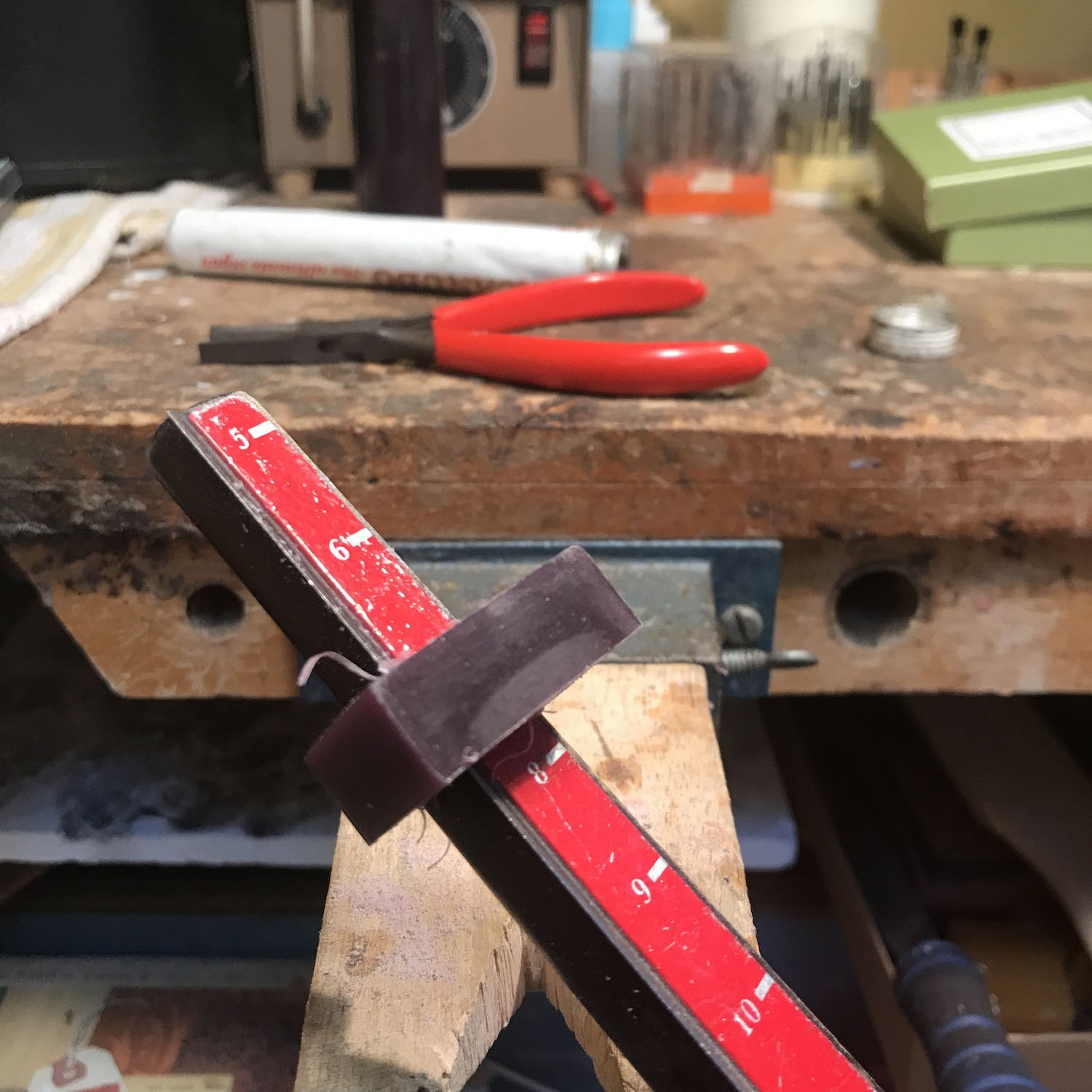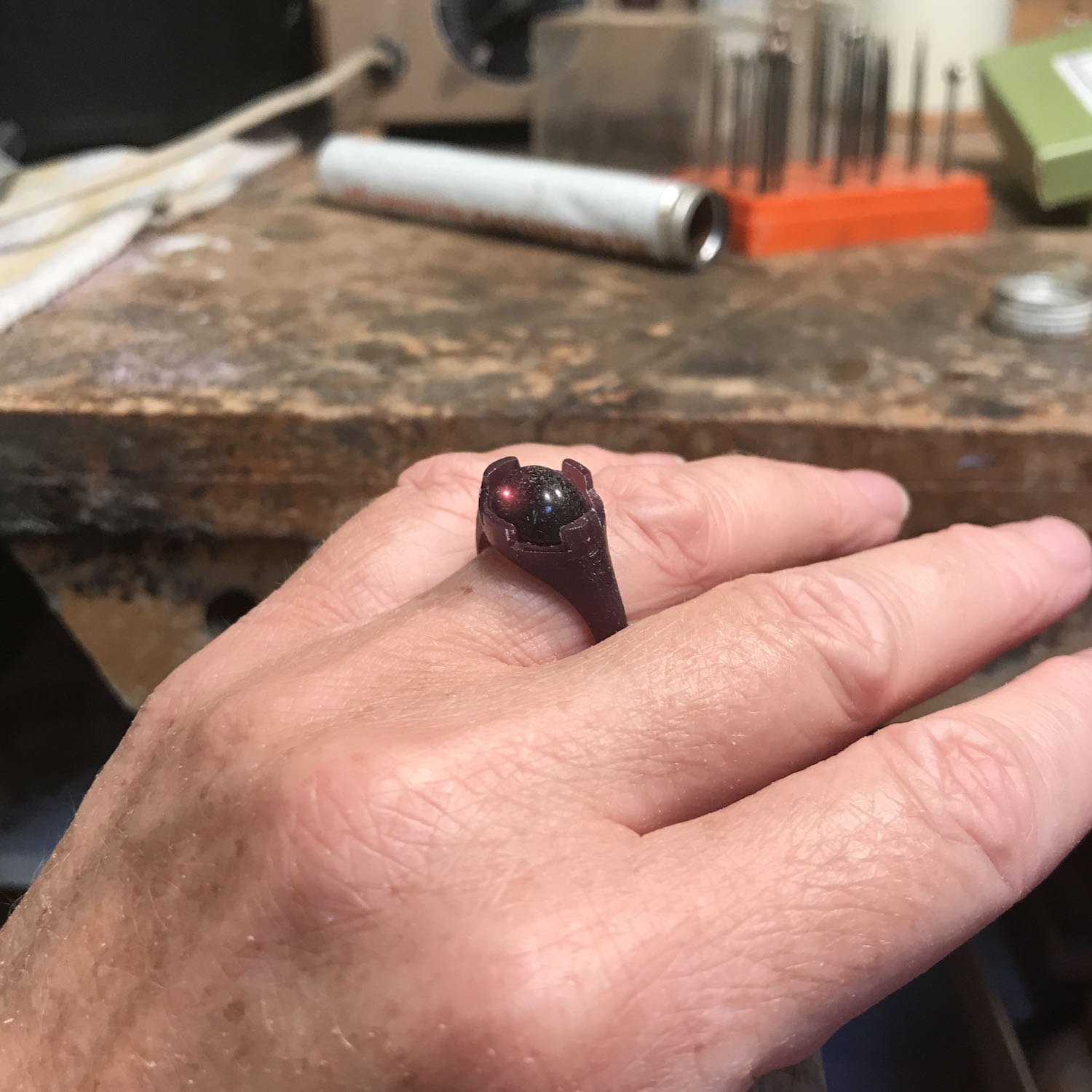The Birka Ring
Kathleen Lynagh Designs pays homage to its timeless beauty with a recreated version, using traditional jewelry making methods and materials. Discover the “Birka Ring”, a Viking treasure found in a 9th century Swedish grave.
Our version of the Viking ring
As a teenager, I wanted to become an archaeologist. I loved studying art and culture from the past and hoped to someday go on summer digs. Now, as a jewelry maker, my love of history has become invaluable.
The Birka Ring
The original silver ring was recovered in the late 1800s by the famous Swedish archaeologist Hjalmar Stolpe. The ring is made of silver alloy, and contained a stone with an inscription written in the Kufic Arabic script widely used between the 8th and 10th centuries. "For/to Allah," the inscription read. The center “gem” was undefined.
It was the only known Viking Age ring with an Arabic inscription to be found in the entire of Scandinavia.
Original Ring: Credit: Statens historiska museum / Christer Åhlin
Recently…
New research from biophysicist Sebastian Wärmländer of Stockholm University and his colleagues has confirmed exactly how unique the ring was.
In the journal Scanning, the researchers recount how they used a scanning electron microscope to investigate the origins of the ring. Notably, they discovered that the stone in the ring is actually coloured glass – at the time an exotic material for the Vikings, though it had been made for thousands of years in the Middle East and North Africa.
How did this ring come into the hands of a Viking client?
While physical evidence of it is unusual, there have been plenty of accounts of Scandinavians from this period crossing paths with the early Muslim world. By the 11th century Vikings had become known for their lengthy sea voyages, journeying as far west as the Americas and likely reaching Constantinople and even Baghdad when they travelled the other way. YEA - I am part Viking and I love being on the wide open seas!
The Ring’s Inscription and Etching
The researchers who published a study about the ring in 2015, believe this is Kufic text, an old Arabic script used from the seventh to the tenth century. In their analysis, the Kufic inscription reads AL_LL-[H] (translates. to/for Allah).
This would bring the question to mind, was the woman perhaps a migrant and the only owner of the ring which she then took to her grave far from home in Birka?
Pseudo-Kufic
Others see this differently, among them Arabists and Islamic Art scholars. They claim the analysed letters do not form legible words in Kufic text, but are an imitation better known as pseudo-Kufic.
“The authors write, “it is not impossible that the woman herself, or someone close to her, might have visited - or even originate from - the Caliphate or its surrounding regions.”
What does this mean for the origins of this ring?
It makes it less likely for the woman or the ring to have come all the way from the Caliphate.
Foremost, because it seems hard to imagine any Arab-speaking silversmith engraving a faulty text on a ring – or an Arab-speaking woman wearing it.
On another note, if a Swedish silversmith made the ring, they obviously chose not to visualize the letters in the geometrical Kufic style. A kind of application that is seen, for example, on textile bands on clothing. Instead, they choose the characters to resemble Arabic letters.
Today, as I recreate this ring for my client, I am enjoying the process of making the ring and bringing it back to life so to speak..
Follow the step by step process to replicate the ring.
The Commission: Recreating the Birka Ring
Close-up of the engraved Venetian bleach glass. Image By Kathleen Lynagh.
Matching the Center “Gemstone”
It took multiple attempts to find the perfect tool tip for the engraving, but I was confident that we could do it. The image above displays our initial effort at engraving a Venetian bleach glass sample. After determining that I could replicate the center stone by sandblasting a glass bombe, I began to carve the design into wax.
Wax Carving
Fabrication and Finishing
The glass gem was sandblast and then hand engraved. The wax was cast in sterling silver, finished with a patina so it would look like it had been created ages ago..
After applying the finish we set the glass "gem" which was a Vintage Glass Cabochon. It was the perfect size and color.
Sharing Progress Videos of Our Work
Sharing the finish details on the Viking Ring
Setting the glass gem detail video
Our Finished Replica Viking Ring
Kathleen Lynagh Designs - our recreated Viking ring - side view
The patina on the sterling silver looked like it was just excavated.
Image By: Kathleen Lynagh Designs
Image By: Kathleen Lynagh Designs






















